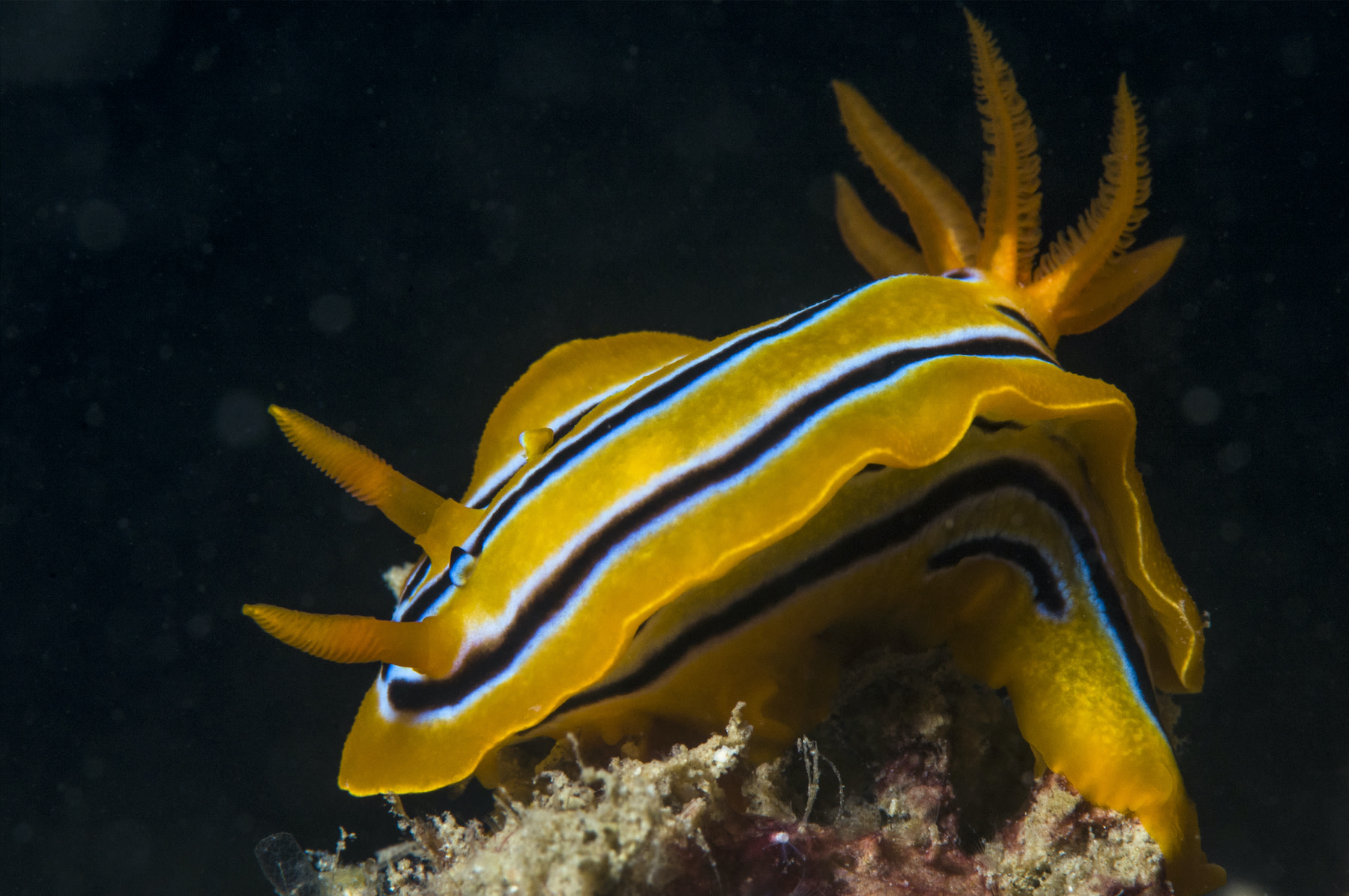 Listen to this article
•
15:34 min
Listen to this article
•
15:34 min
If I’m asked what the craziest animal I’ve ever encountered in the ocean is, I almost never point to the largest or seemingly most dangerous. Some of the most intriguing animals I have seen are cute, and barely larger than the length of the word “miniscule” on this page.
With the limited amount of time available underwater while diving, divers may choose to swim across a reef end to end, trying to see every animal there is, or hover in one place and look into every crevice. Attempting the latter, I was once observing a two-inch, candy-coloured, polka-dotted living being decorated with ruffles, gracefully traversing the rocky-scape it calls home. This encounter was made all the more special because, in all likelihood, I would not see an identical creature again. And that is how I got sucked into the extraordinary world of sea slugs.

Phyllodesmium is a genus of nudibranch with anability to mimic the type of coral they prey on (fan coral, soft coral and so on) as well as extract their zooxanthellae (miscroscopic algae) for their own secondary food production. Cover photo: Umeed Mistry
Sea slugs is a broad term given to marine gems from an overwhelming number of distinct families within the phylum Mollusca: they include air breathing pulmonate slugs; pelagic sea butterflies; sea hares of Aplysiomorpha; headshield slugs of Cephalospidea; sap-sucking Sacoglossans; and dorid, aeolid, armina (to name a few) nudibranchs. Mollusca is the same phylum that includes other soft-bodied invertebrates such as snails, and cephalopods like the octopus, squid, and cuttlefish.

The ocean has countless soft and delicate invertebrates. However, you will know a sea slug as soon as you notice its paired “rhinophores”. Emerging like clubs, rods, or feathers near its head, rhinophores are powerful chemosensory organs used by a sea slug to “smell” or “taste” food, but often mistaken for antennae.
Next, you look for its breathing apparatus. Whether it is the “anal gill” which sits like a flower on the back of dorid nudibranchs or the swollen “cerata” lining the top of aeolid nudibranchs, the respiratory organs of these slugs can look as extravagant as a corsage worn to a wedding. Some like the Phyllidia wart slug have hidden gills along the side of their bodies. The final graceful touch to the sea slug’s anatomical get-up is the “mantle skirt” that runs around its perimeter. In the same way that the breeze from the subway grates lifted Marilyn Monroe skirt, the mildest of currents can send a sea slug’s mantle skirt flying!
There is exquisite beauty even in the way they lay their eggs. Sea slugs are hermaphrodites. This means that two individuals can extend their penises, fertilize the eggs of one another, and depending on the species, each proceeds to lay anywhere between a few eggs to a few million eggs. By merely embedding their eggs in thick mucus sheaths, these slugs create artistic installations that resemble ornamental flowers made of string and ribbon.
The final graceful touch to the sea slug’s anatomical get-up is the “mantle skirt” that runs around its perimeter. In the same way that the breeze from the subway grates lifted Marilyn Monroe skirt, the mildest of currents can send a sea slug’s mantle skirt flying!

Scientists believe that the secret behind the vibrancy and overall beauty seen in sea slugs can be attributed to them seeking protection. Unlike their close relatives, snails, most sea slugs do not possess a protective shell. Shells if any are lost after their larval phase of growth or retained in a reduced, often hidden form. A sea slug’s flamboyant appearance in most instances blends in perfectly with a wide range of habitats. What appear to us onlookers as tasteful colour schemes are cues to signal danger. Bright colours convey to the rest of the animal world that these slugs contain potent poisons, that are terribly distasteful and not worth ingesting.
Speaking of poisons, slugs typically obtain their toxins from the food they eat. This is where slug life becomes even more impressive. Each taxa or group of sea slugs has a specialised diet for which they have developed a specific anatomy, allowing them to do all kinds of bizarre things with their food once it is ingested.

For instance, there are sap-sucking Sacoglossan slugs which feed exclusively on marine algae, but only partially digest it. Some photosynthetic chloroplasts are kept alive to continue cooking while in the body of the slug.
Aeolid nudibranchs on the other hand are carnivorous and relish feeding on coral polyps, anemones, jellies, hydroids, and other stinging members of phylum Cnidaria. Lest we think they were too ordinary to notice, aeolids go ahead and actively harvest second-hand venom from the animals they prey on. The pouch-like cerata lining their backs for respiration doubles up as a row of canons to store nematocysts (venomous stinging cells) that their victims failed to fire at them when under attack. In essence, these inventive slugs repurpose the defence weapons of their prey for their own protection.

Observing sea slugs is eye-opening and mind-boggling all at once. They teach us life lessons apt for modern times. When we speak of evolution, it is not merely about strength, intelligence, or camouflage. Perhaps evolution has a deep appreciation for creativity and favours thinking out of the box.





